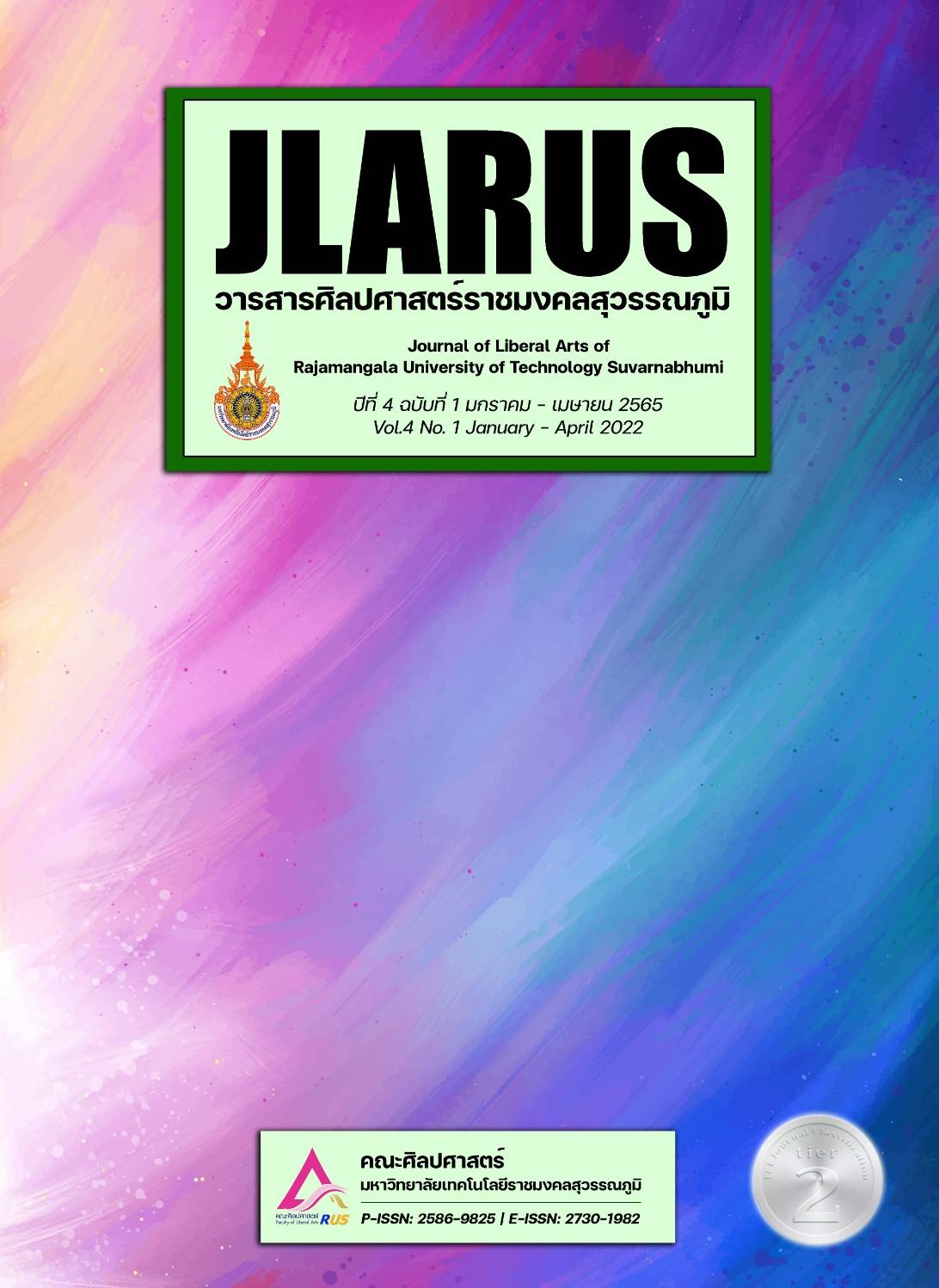THE ENGLISH LANGUAGE ANXIETY OF UNIVERSITY STUDENTS IN AN INTERNATIONAL PROGRAM: A CASE STUDY OF THAI AND NON-THAI STUDENTS IN THE ENGLISH FOR BUSINESS COMMUNICATION PROGRAM AT DHURAKIJ PUNDIT UNIVERSITY
Main Article Content
Abstract
This study aimed to examine 1) the level of English language anxiety of students in an international program 2) to investigate the relationship between the students’ learning achievement and their level of English language anxiety, and 3) to analyze the differences in the sources of English language anxiety between Thai students and non-Thai students. The samples were taken from 36 university students studying in English for Business Communication (International Program) in the Faculty of Arts. The instrument used in this study was adopted from a questionnaire from a study of foreign language learning anxiety developed by Paranuwat (2011). The data was analyzed using descriptive statistics and the Pearson’s product moment correlation coefficient. The research results were found as follows: 1) students had moderate anxiety with the average mean of 2.84 and the two major sources of students’ English language learning anxiety when considering the six components of performance anxiety were fear of being less competent than others, with the mean of 3.31 and test anxiety with the mean of 3.00 2) there was a significant negative correlation between English language learning anxiety and the moderate-achieving group of students, and 3) the distinct differences in the sources of English language learning anxiety according to the six components of performance anxiety of Thai and non-Thai students were fear of being less competent than others and test anxiety with a mean of 3.52 and 2.87, and test anxiety with a mean of 3.15 and 2.87, respectively.
Article Details

This work is licensed under a Creative Commons Attribution-NonCommercial-NoDerivatives 4.0 International License.
References
Aida, Y. (1994). Examination of Horwitz, Horwitz, and Cope’s construct of foreign language anxiety: The case of students of Japanese. The Modern Language Journal, 78, 155-168.
Bailey, K.M. (1983). Competitiveness and anxiety in adult second language learning: Looking at and through the diary studies. In H.W. Seliger and M.H. Long (Eds.), Classroom oriented research in second language acquisition. Rowley, Massachusetts: Newbury.
Basilio, M. J. & Wongrak, C. (2017). Foreign Language Anxiety: A Case of Thai EFL Learners at Ubon Ratchathani Unversity. The Asian Conference on Education & International Development 2017 Official Conference Proceedings.
Gordon. E. M. & Sarason S. B. (1995). The Relationship Between Test Anxiety and Other Anxieties. Journal of Personality, 23, 317-323
Han, L (2013). Foreign language anxiety: Past and Future. Chinese journal of linguistics (Quarterly), 442-464
Hashemi M., Abbasi M. (2013). The role of the teacher in alleviating anxiety in language classes. International Journal of Applied and Basic Science Explore Publications, 4(3), 2251-838X.
Horwitz, E. K., Michael, B. Horwitz, and Joann. C. (1986). Foreign language classroom anxiety. The modern language Journal, 70.
Kim, S. Y. (1998). Affective experiences of Korean college students in different instructional contexts: Anxiety and motivation in reading and conversation courses. Unpublished doctoral dissertation, The University of Texas, Austin.
Liu, M. & Jackson, J. (2008). An exploration of Chinese EFL learners’ unwillingness to communicate and foreign language anxiety. Modern Language Journal, 92, 71-86.
McCroskey, J. C. (1970). Measures of communication-bound anxiety. Speech Monographs, 37(2), 269-277.
Rodriguez, M. (1995). Foreign language classroom anxiety and students’ success in EFL classes. Revista Venezolana de linguistica Aplicada, 1, 23-32.
Sadiq. J. M. (2017). Anxiety in English Language Learning: A Case Study of English Language Learners in Saudi Arabia. English Language Teaching. Canadian Center of science and Education, 10(7).
Saito, Y., & Samimy, K. (1996). Foreign language anxiety and language performance: A study of learning anxiety in beginning, intermediate, and advanced-level college students of Japanese. Foreign Language Annuals, 29, 239-251.
Sampaothong, A. & Simpson, J. (2019). An investigation into undergraduate EFL Students’ English Language Anxiety: a Case Study in the Faculty of Humanities, Naresuan University, Thailand. The Annual National Conference of Liberal Arts.
Sarason, I, G. (1978). The test anxiety scale: Concept and research. In C. D. Spielberger & Sarason, I. G. (Eds.), Stress and Anxiety (Vol. 5, pp. 193-216). Washington DC: Hemisphere.
Paranuwat, J. (2011). A study of foreign language learning of the first year students at Srinakharinwirot University. Srinakharinwirot Universtiy.
Watson. D. & Friend. R. (1969). Measurement of Social-Evaluative Anxiety. Journal of Consulting and Clinical Psychology, 33, 448-51
Yiamsawat, T. (2016). English Language classroom anxiety: components, Effects, and Solution. Suthiparithat Journal, 30(95), 1-12.


